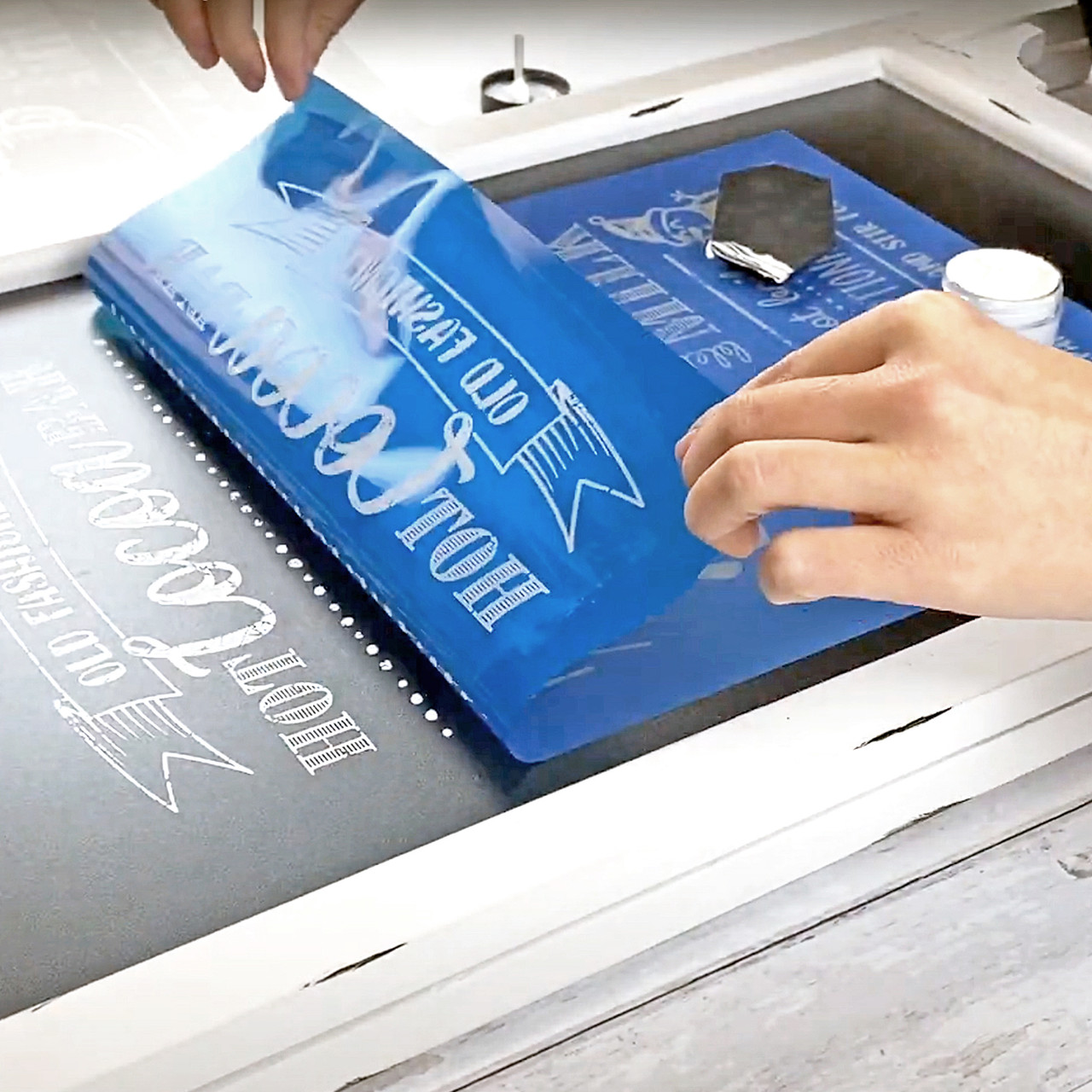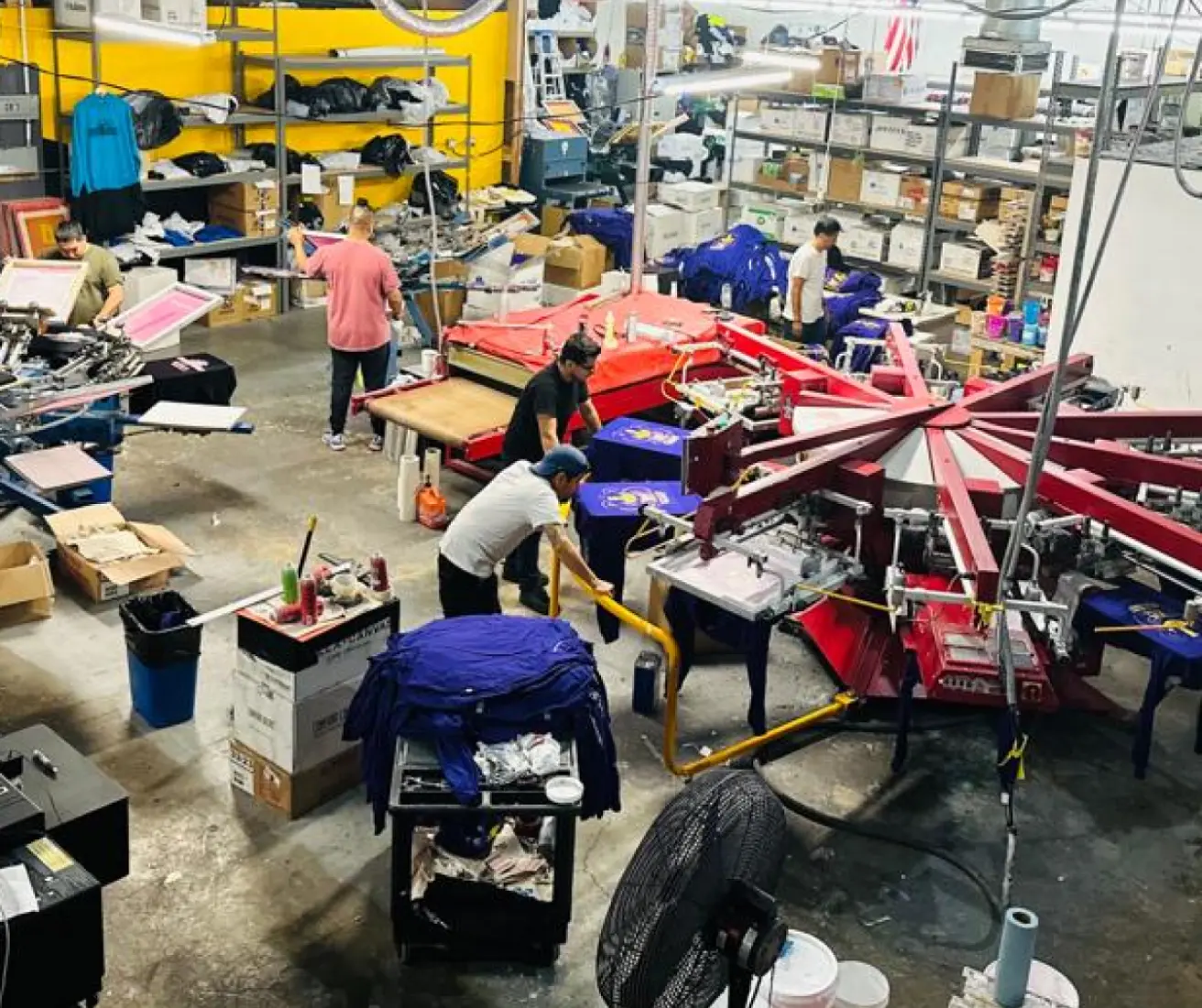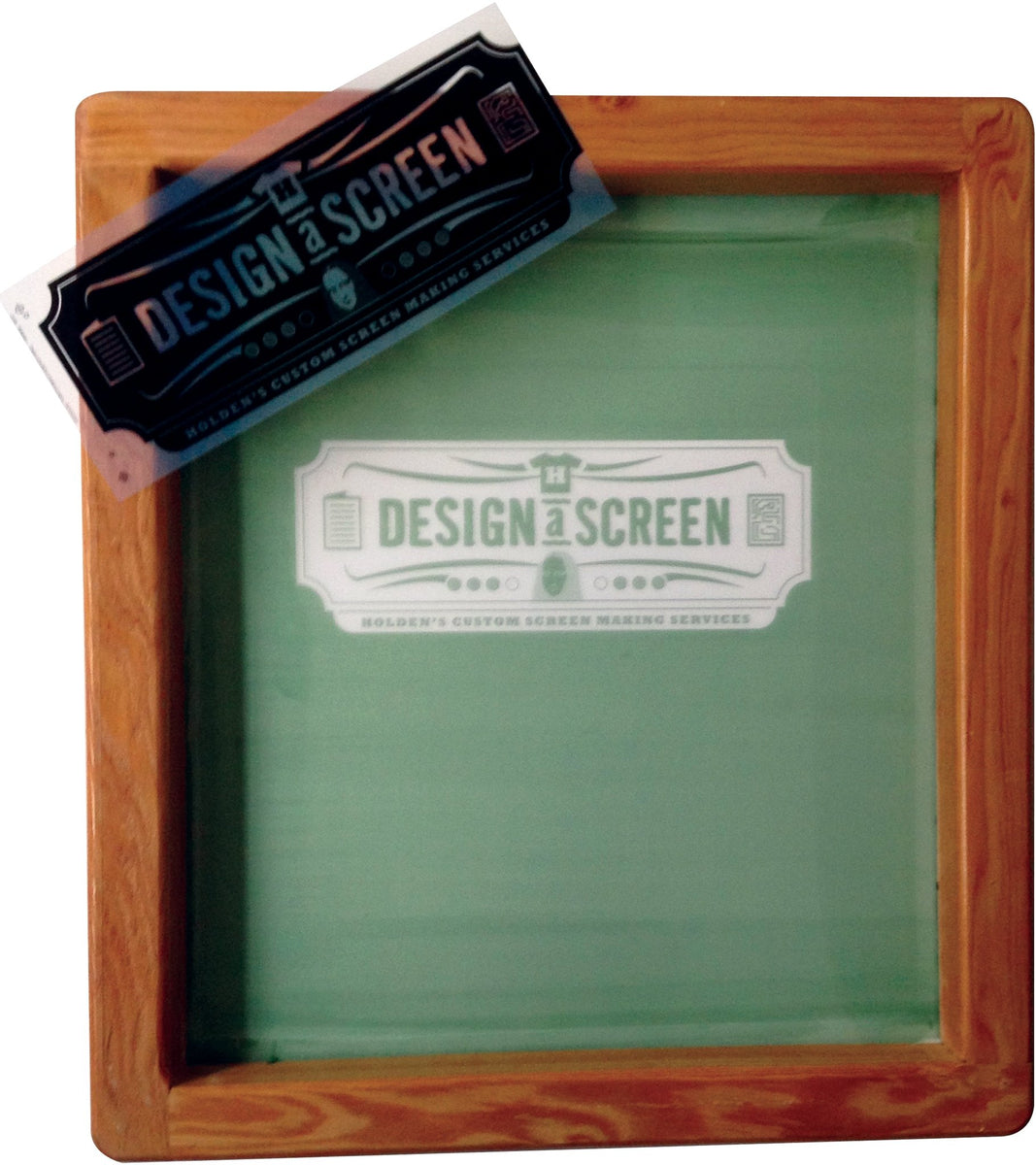Artistic Silk Screen Printing for Limited Edition Prints
Artistic Silk Screen Printing for Limited Edition Prints
Blog Article
Screen Printing Uncovered: Whatever You Required to Learn About Tee Shirt and Garment Printing Strategies
If you've ever questioned exactly how those lively designs wind up on your preferred tees, you remain in the right area. Display printing is a fascinating technique that integrates art with strategy, offering unlimited opportunities for creativity. Understanding the fundamentals, from devices to ink choices, can considerably impact your results. All set to discover the important components that make screen printing an art form? Allow's reveal the information that can raise your jobs.
The Fundamentals of Screen Printing: Just How It Functions
When you plunge into display printing, you'll find it's both a scientific research and an art. At its core, display printing involves creating a pattern, or screen, that permits ink to travel through just in certain locations (screen printing kit). You begin by selecting your design and preparing your display with a light-sensitive emulsion. As soon as you reveal this emulsion to light, it sets, leaving your style as an adverse room.
Following, you'll mix your inks and prepare your printing surface area. Setting the display over the textile, after that use a squeegee to press ink through the screen onto the garment. This procedure calls for precision, as you want clear, lively prints. After printing, you'll cure the ink with warmth, ensuring it follows the textile and lasts with cleans. Each step is important, and mastering them will boost your screen printing skills, transforming simple garments right into distinct, meaningful items.
Kinds Of Screen Printing Strategies
As soon as you realize the essentials of display printing, it's time to explore the various techniques that can elevate your designs. One popular technique is traditional screen printing, where ink is pressed with a stenciled screen.
If you're going for fine details, take into consideration discharge printing. This technique removes color from the textile, leaving a soft, vintage look. Another choice is plastisol printing, known for its sturdiness and dazzling shades, making it a favored for several brand names. Ultimately, explore halftone printing to develop slope impacts and complex styles. Each technique has its special appeal, so don't hesitate to attempt them bent on find what matches your style best!
Necessary Tools for Display Printing
To attain magnificent outcomes in display printing, having the ideal devices is essential. Initially, you'll need a strong display printing framework, which holds the mesh that transfers your design onto the garment. Next, spend in high-grade squeegees; these are crucial for using ink uniformly throughout the screen. You'll likewise need a good exposure device to develop your displays, in addition to a washout booth for cleaning them after use. A reliable warmth source, like a conveyor clothes dryer or heat press, is vital for curing your prints to ensure longevity. Don't fail to remember an appropriate office, geared up with tables and storage for your products. Safety equipment, such as handwear covers and masks, will maintain you secure from chemicals and inks. With the right tools, you'll be well on your method to producing professional-quality prints.
Choosing the Right Inks and Products
When selecting inks and products for display printing, you need to consider the kind of ink that functions finest for your job. Think of fabric compatibility to guarantee your layouts look last and wonderful lengthy. Discover environmentally friendly ink choices to make your printing process a lot more lasting.
Kinds Of Display Inks
Selecting the right display ink is important for attaining dynamic, resilient prints that satisfy your job's demands. There are a number of kinds of display inks to check out. Specialized inks, such as metal or glow-in-the-dark, can add one-of-a-kind effects to your styles.

Textile Compatibility Considerations
Comprehending fabric compatibility is crucial for achieving top notch screen prints, especially because different products react distinctively to different inks. When picking inks, consider the material type-- cotton, polyester, or blends. For cotton, water-based inks function well, providing softness and breathability. Polyester, on the other hand, frequently requires plastisol inks for far better attachment and vibrant colors. If you're printing on blends, you could require to use a mix of both types. Constantly test your inks on example textile to guarantee they adhere correctly and keep color stability. Furthermore, bear in mind that fabric weight and appearance can affect the last end result, so picking the appropriate ink and material combination is important for your job's success.
Eco-Friendly Ink Options
Green inks are coming to be a preferred option for display printers that wish to lessen their environmental impact while preserving high quality. When choosing inks, think about water-based inks, which are less harmful and less complicated to tidy up contrasted to standard solvents. These inks bond well with materials, delivering dynamic results without toxic chemicals. You could likewise check out eco-solvent inks that use less volatile natural substances (VOCs), making them a more secure alternative for both your health and the earth.
Furthermore, search for inks made from eco-friendly resources, such as soy or vegetable-based alternatives. By selecting the right inks and materials, you'll not just produce stunning styles but also add to an extra lasting printing process. Make the button, and your prints will reflect your dedication to the atmosphere!
Preparing Your Layout for Display Printing

File Format Demands
To guarantee your layout looks sharp and dynamic on material, you'll require to pay attention to file format needs for screen printing. Begin with vector files like AI or EPS, as they can be scaled without losing quality. If you use raster images, choose for high-resolution files, such as TIFF go to the website or PNG, ideally at 300 DPI. Stay clear of using JPEGs, as they can shed quality when resized. Also, make certain your layout has a transparent background to stop undesirable white edges on your prints. Lastly, maintain shade modes in mind; CMYK is common for display printing, so convert your RGB develops accordingly. By following these standards, you'll set your artwork up for an effective print.
Color Separation Techniques
Shade splitting up is an important step in preparing your style for screen printing, and mastering it can greatly boost your print high quality. You'll need to damage your style into individual shades, as each color calls Home Page for a separate screen throughout printing. This accuracy not just assures accurate shade depiction however likewise simplifies the printing process.
Resolution and Dimension
Achieving the most effective lead to display printing begins with assuring your design has the appropriate resolution and dimension. Preferably, your art work needs to go to the very least 300 DPI (dots per inch) for sharp, clear prints. If you use reduced resolution, your last product may look pixelated and less than professional.
When it involves dimension, take into consideration the dimensions of your print location. Layout your artwork to match the final print size, ideally producing it in the real dimensions you'll be printing. This means, you'll stay clear of any type of unanticipated scaling concerns.
Constantly examine your design in both vector and raster layouts. Vector graphics can be scaled without losing top quality, making them excellent for display printing. Preparing appropriately will guarantee your layout looks fantastic on every garment!
Step-by-Step Screen Printing Process
Display printing is a vibrant process that allows you to create lively designs on different surface areas. To get begun, you'll require a display, solution, and your picked ink.
After washing out the unexposed solution, your display is prepared. Set it up on your printing surface and straighten your garment beneath it. Pour ink onto the screen and make use of a squeegee to push the ink through the stencil onto the textile. Raise the display meticulously and let the print dry. Finally, treat the ink making use of warm to assure resilience. That's it! You've successfully screen published your design.
Tips for Effective Screen Printing Projects
While you're diving into your screen printing jobs, bear in mind that prep work is key to success. Beginning by collecting all your materials-- inks, squeegees, displays, and garments. A tidy work area assists stop undesirable errors, so clean up prior to you begin.
Next, validate your artwork is high-resolution and effectively sized for your garment. Evaluate your display for proper exposure and clean it thoroughly to prevent spots. When mixing your inks, comply with the maker's guidelines to achieve the ideal consistency.
During printing, apply even stress with your squeegee for constant outcomes. Don't rush; useful source take your time to verify each print fulfills your criteria. After printing, let your garments completely dry completely before managing or packaging them.
Last but not least, constantly keep a sample of your help future reference. By doing this, you can examine your progression and enhance your strategies with time. Happy printing!

Often Asked Concerns
How Long Does It Require To Establish a Display Printing Task?
Establishing a display printing job usually takes around 30 mins to an hour. You'll prepare the displays, mix inks, and change journalism. The moment varies based upon complexity and experience, so remain organized!
Can I Print on Various Fabric Types Using the Very Same Technique?
Yes, you can publish on different fabric kinds utilizing the very same technique, but you'll require to readjust your settings and inks. Some materials absorb ink in different ways, so trying out assurances the most effective results for each product.
What Prevail Mistakes to Prevent in Display Printing?
When display printing, prevent typical errors like using the wrong ink, neglecting appropriate exposure times, or avoiding pre-press checks. Always evaluate your configuration and keep tidy displays to assure high quality results each time.
How Can I Properly Tidy and Maintain My Display Printing Equipment?
To correctly clean and preserve your screen printing tools, you need to consistently clean screens with ideal solvents, inspect mops for wear, and ensure all devices are saved completely dry and dust-free. Uniformity improves and prevents pricey repair work efficiency.
Is Display Printing Eco-friendly Compared to Other Methods?
Screen printing can be a lot more ecologically friendly than various other approaches, especially if you utilize water-based inks and eco-conscious products. By choosing lasting products and methods, you decrease waste and decrease your effect on the planet.
Display Printing Uncovered: Every Little Thing You Need to Know Regarding Tee Shirt and Garment Printing Techniques
At its core, display printing involves developing a pattern, or display, that allows ink to pass through only in details locations. Setting the screen over the material, after that use a squeegee to press ink via the display onto the garment. One preferred technique is conventional display printing, where ink is pressed via a stenciled screen.When choosing inks and products for screen printing, you require to take right into account the type of ink that works best for your task.
Report this page